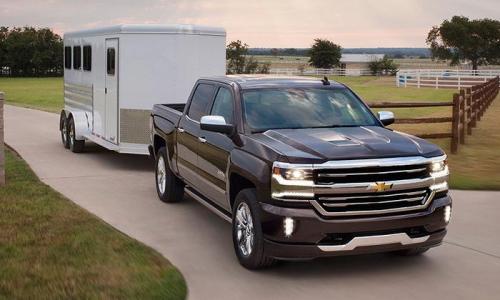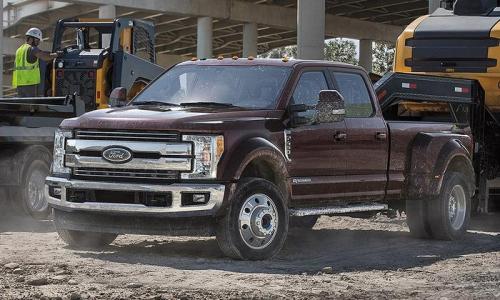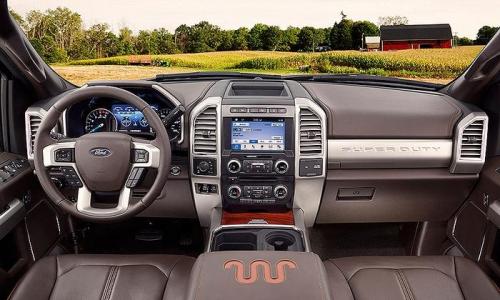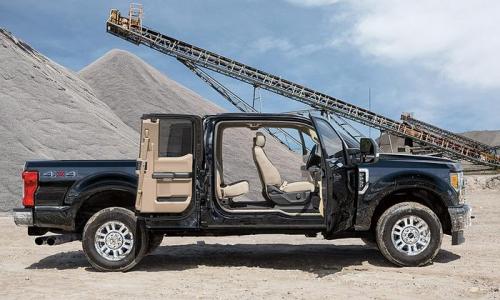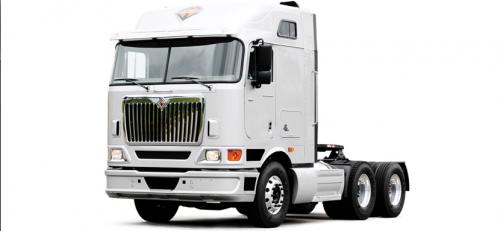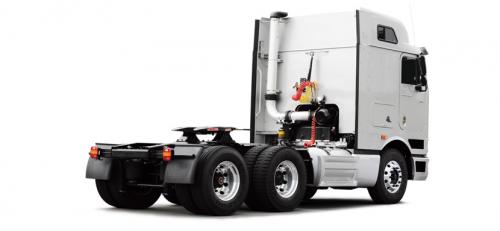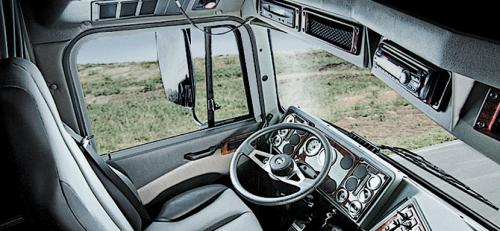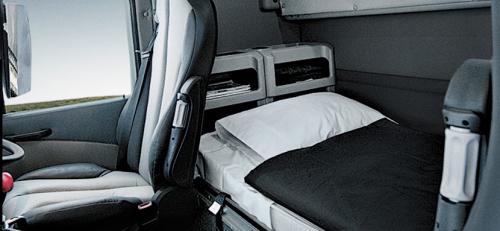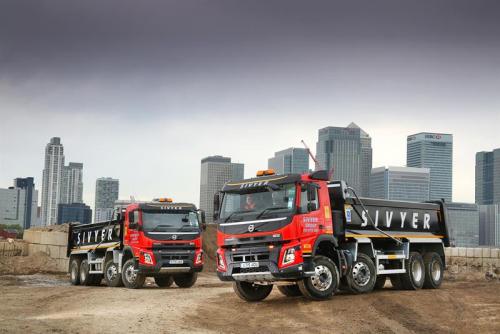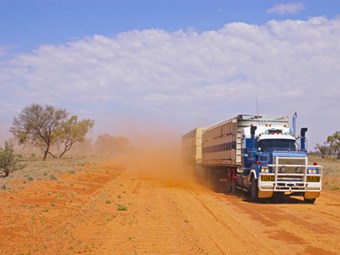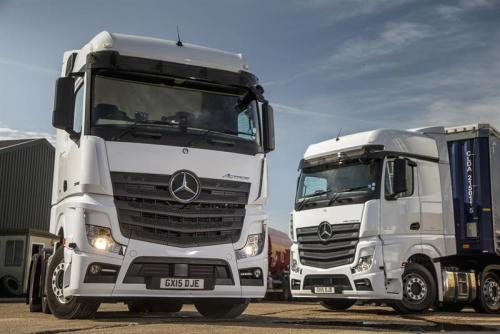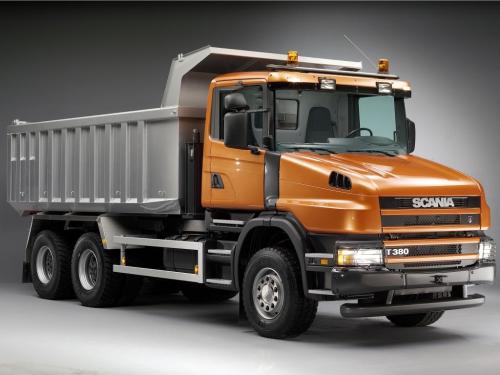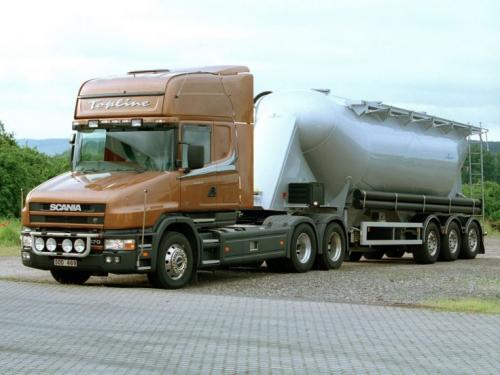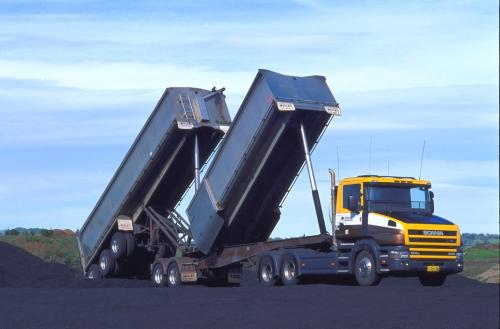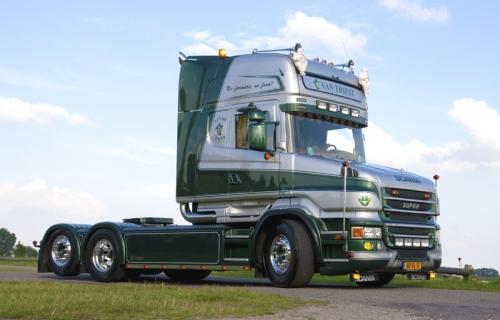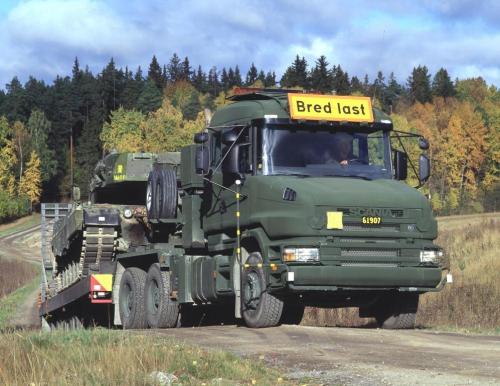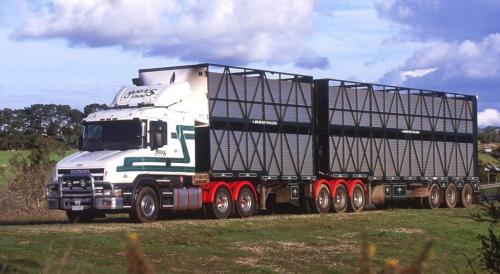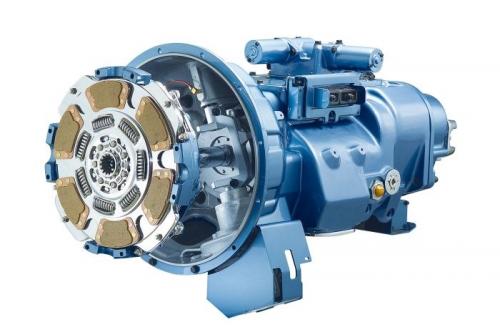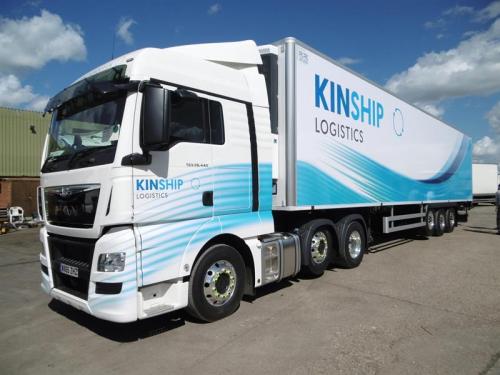
kscarbel2
Moderator-
Posts
18,883 -
Joined
-
Days Won
114
Content Type
Profiles
Forums
Gallery
Events
Blogs
BMT Wiki
Collections
Store
Everything posted by kscarbel2
-
Wall Street Journal / September 24, 2015 Equipment maker projects 10,000 job cuts, revenue falling for record fourth-straight year Caterpillar Inc. said it would slash thousands of jobs and cut manufacturing space by 10%, as it expects weakening demand from resource and construction companies will continue to drive down sales of its heavy equipment through at least next year. The company said the job cuts could exceed 10,000 people through 2018, including 4,000 to 5,000 salaried and management positions to be eliminated by the end of next year. It aims to reduce annual costs by roughly $1.5 billion. Caterpillar said it now expects 2015 revenue to be about $48 billion—$1 billion lower than its previous projection—which would mark a decline of about 27% from a peak of nearly $66 billion in 2012. And it said 2016 revenue likely would fall a further 5% from 2015, which would be the first time in Caterpillar’s 90-year history that sales declined for four consecutive years. The announcement, which sent Caterpillar shares tumbling, underscores the depth of the downturn in the mining and energy sectors after years of rocketing demand for the company’s excavators, mining trucks, wheel loaders and industrial engines. Caterpillar already had cut its global workforce, before Thursday’s announcement, by more than 31,000 since mid-2012, and it had closed or announced plans to close or consolidate more than 20 facilities, affecting 8 million square feet of manufacturing space. Caterpillar, based in Peoria, Ill., had 111,247 employees at the end of June. Previous slumps in global mining have lasted for years, making it difficult for the company to hold on to plants and workers in anticipation of an upturn. The latest restructuring makes clear that Caterpillar expects the current pain to persist. “We are facing a convergence of challenging marketplace conditions in key regions and industry sectors—namely in mining and energy,” Chief Executive Doug Oberhelman said. “While we’ve already made substantial adjustments as these market conditions have emerged, we are taking even more decisive actions now.” He said the cuts would “better position Caterpillar to deliver solid results when demand improves.” Mr. Oberhelman became CEO in 2010 determined to compete better in fast-growing overseas markets, where Caterpillar had lacked production space, and in the mining-equipment market, which it had eyed for years. Caterpillar aggressively expanded during a commodities and construction boom that followed the 2008 global economic slump, anticipating sustained demand for equipment from China, Brazil and other overseas markets. The company anticipated eventually needing production capacity to sustain equipment sales of about $100 billion annually. It also acquired more factories and workers when it purchased Milwaukee-based, mining-equipment maker Bucyrus International in 2010. The $8 billion purchase, the largest in Caterpillar’s history, was a strategic departure for a company with a reputation for caution in acquisitions. The purchase helped increase Caterpillar’s annual sales by $33 billion from 2009 through 2012. But commodity demand has since collapsed amid slower economic growth in China, and lower prices for oil also have squeezed demand from Canada’s oil-sands region for Caterpillar’s giant mining trucks. Mining company BHP Billiton this week cut its planned 2016 capital spending by $2.5 billion to $8.5 billion, and Phoenix-based Freeport-McMorRan Inc. said last month it would slash its 2016 outlay by 29% to $4 billion and cut about one-tenth of its U.S. workforce. Macquarie Bank recently predicted that the industry’s global capital spending would fall by half through this year from its 2012 peak of $134 billion. China’s construction-equipment market also has tanked amid a slowdown in housing and infrastructure construction. Unit sales of construction excavators in China are down about 40% so far this year. “They’ve got huge amounts of capacity in China and now they don’t need it,” said Charles Yengst, president of equipment-market consultants Yengst Associates Inc. “Everywhere you go they’ve been adding capacity, except in Europe, and we’re watching markets all over the globe just shrink.” Throughout the slump, Caterpillar has remained profitable, with earnings of $3.7 billion last year, down from $5.7 billion in 2012. And even as it has shed workers to cut costs, it has spent $8.2 billion on share repurchases over the past three years to support its stock. Still, its share price has fallen sharply. The shares declined 6.3% to $65.80 on Thursday, leaving them down 41% from their high in 2014. Caterpillar on Thursday didn’t update its profit outlook for this year, saying it would do so when it reports third-quarter results late next month. The company said its restructuring effort is expected to lead to pretax costs of roughly $2 billion, but that it expects to record half of the projected $1.5 billion in cost savings from the restructuring next year. It said the restructuring could affect more than 20 facilities, covering more than 10% of its manufacturing square footage. Caterpillar said it isn’t abandoning plans for a new headquarters building in downtown Peoria, but that there currently is no schedule to begin construction. “We do remain committed to Peoria and Illinois, and our vision for a new downtown headquarters, [but] now is not the time to begin work, and I can’t say when,” a spokeswoman said.
-
Automotive News / September 24, 2015 The wraps come off the 2016 Chevrolet Silverado today at the State Fair of Texas and the changes include improved connectivity, a new, optional gearbox, updated grilles and the end of the truck’s signature stacked headlights. The update likely will be the last major cosmetic change before the big pickup is replaced for the 2019 model year by a redesigned version that uses a combination of steel and aluminum. The front of the truck has been made more muscular, with a restyled hood, LED lighting and an assortment of grilles that vary by model. Under the hood, a new eight-speed automatic transmission will be expanded to trucks with the 5.3-liter V-8 engine. GM is expected to offer a 10-speed automatic, perhaps as early as the 2017 model year, under a joint venture with Ford to produce nine-speed automatics for front-wheel-drive vehicles and 10-speed automatics for rear-wheel-drive vehicles. Other improvements to the 2016 truck include an update to Chevy’s MyLink infotainment system that supports Apple CarPlay and Android Auto smartphone connectivity. Safety features available for 2016 include forward collision alert, lane-keep assist and high-beam assist. Chevrolet said the 2016 Silverado also will be available with a remote locking tailgate and wireless phone charging on LT and LTZ double cab and crew cab models with available bucket seats. Wireless phone charging will come standard on the High Country model. The High Country also will be available with power articulating running boards, which extend to improve access to the cab and swing rearward for easier access to the bed. Related reading - http://www.caranddriver.com/news/2016-chevrolet-silverado-photos-and-info-news .
-
Automotive News / September 24, 2015 The first-ever aluminum-bodied Ford F-series Super Duty pickup will be up to 350 pounds lighter than the current generation but offer increased towing and hauling capabilities, Ford Motor Co. said today. The 2017 Super Duty, which Ford is unveiling at the State Fair of Texas, is scheduled to go on sale late next year. Ford said it has a high-strength steel frame that’s 24 times stiffer, longer cabs and 16 segment-exclusive features, including LED cargo-box lighting and a remote tailgate release. “As we remove weight, we’re making Super Duty more productive by giving our customers better towing and payload capacity,” Craig Schmatz, Super Duty chief engineer, said in a statement. “We’re backing up improved capability with a stronger gasoline and diesel Super Duty engine lineup.” Ford’s conversion of the Super Duty to an aluminum body is another big gamble after last year’s redesign of the F-150. The F series is Ford’s biggest seller and most profitable vehicle, and the Super Duty accounts for about a third of its U.S. sales. Though rival General Motors has tried to portray aluminum as flimsy and expensive to repair, Ford says F-150 customers have reacted positively to the change. U.S. sales of the F series dropped 2.4 percent in the first half of the year but rose 4.8 percent in July and 4.7 percent in August as inventories grew. Transaction prices have soared since the aluminum F-150 went on sale in December. The weight reduction for the Super Duty is half as much as the 700 pounds that Ford cut out of the F-150. In addition to the body and frame, the F-150’s diet included lighter axles, fenders and other parts that need to be stronger on the heavier-duty trucks. Ford did not reveal payload, towing and fuel economy ratings for the Super Duty. Joe Hinrichs, Ford’s president of the Americas, said in a statement that it achieves “new benchmarks in capability, performance and efficiency.” The 2017 Super Duty’s fully boxed frame is made of 95 percent high-strength steel. Ford said it has heavier-duty four-wheel-drive components, driveline, axles and towing hardware than the current Super Duty. It’s available with up to seven cameras, including a new attachable trailer camera to improve visibility when backing. A high-mounted, stop-lamp camera helps drivers see into the cargo box and hook up fifth-wheel trailers; and four high-definition cameras create a bird’s-eye image of the vehicle. Other features on the 2017 model include: • An in-cab trailer tire-pressure monitoring system. • Adaptive steering, which reduces how much the steering wheel needs to be turned when maneuvering at low speeds. • Ford’s Sync 3 infotainment system with an 8-inch touch screen. • Blind Spot Information System that includes the length of a trailer. • Adaptive cruise control and collision warning with brake support. • Remote tailgate lock and release. • Quad-beam LED headlights and taillights. “While Super Duty is America’s best-selling heavy-duty truck, we never take our leadership for granted,” Ford’s product development chief, Raj Nair, said in a statement. “Our team is using relentless innovation in materials, technology and Built Ford Tough engineering to deliver customers our best Super Duty yet.” Engines are carried over from the current model. The pickup version comes with either a 6.2-liter V-8 gasoline engine, which is mated with a new TorqShift-G transmission for the F-250, or a 6.7-liter Power Stroke V-8 diesel. The chassis cab version is available with either of those options or a 6.8-liter V-10 gasoline engine. Ford said all three cabs are longer and have a new interior design with a dual-compartment glove box and overhead console-mounted switches to control aftermarket equipment. The SuperCab and Crew Cab versions have flat floors to aid in loading large items. The Super Duty, built at Ford’s Kentucky Truck plant in Louisville alongside the Ford Expedition and Lincoln Navigator, will be offered in five trims: XL, XLT, Lariat, King Ranch and Platinum. Pricing was not released. Related reading - http://www.caranddriver.com/news/2017-ford-f-series-super-duty-official-photos-and-info .
-
Daimler Press Release / September 23, 2015 Stuttgart/Wörth – People looking for a new truck to handle their transport task these days first look on the Internet. For this reason, Mercedes-Benz has been offering all its truck customers the option to gather information about vehicle solutions using the Truck Online Configurator (TOC) for many years. The Mercedes-Benz TOC has now been further improved and made compatible with the latest digital devices. The Truck Online Configurator is available at https://toc.mercedes-benz.com/ex/. Configuration always starts with selecting a model series. Further information about the vehicle and equipment features can be accessed easily within the configuration process. The following options are available after completing the configuration: Download of the vehicle configuration and the technical data360-degree exterior view of the desired vehicle from four different anglesDesigning the three defined paint areas for cab, ornamental grille and detachable parts with the help of a sample selection of 18 colours for each.The configuration can be sent directly to an authorised Mercedes-Benz dealer to establish contact. As a result, the TOC assists in the buying decision process and helps prepare the next process steps. The sales associate can now contact the customer for preparing a concrete quote. The new TOC has a responsive design, which means it takes the format in which the user wants the desired information displayed into consideration. This responsive design also ensures an optimised display on mobile devices by adapting to their requirements profile. Information displayed side by side on a laptop across the entire width of the screen is automatically split vertically and the content is displayed at the bottom of the page. The same applies when using the TOC on a smartphone. This preserves the functionality of the web page and all information is accessible quickly, easily and in way that is user-friendly – independent of device, operating system and format. With the latest version of the TOC, Mercedes-Benz provides interested parties on all mobile devices with a fast and easy overview of which products are suitable for the transport task at hand and establishes contact with a sales associate.
-
Renault Trucks Press Release / September 23, 2015 37 drivers from 20 countries will be going head to head during the international final of the Optifuel Challenge 2015, a competition focused on economic driving organised by Renault Trucks. The winner will be the driver capable of consuming the least fuel while maintaining required journey speed. The verdict will come on 7 October, after a day of trials in Lisbon. The finalists will be driving a Renault Trucks T, voted International Truck of the Year 2015. After Seville in 2010 and Nice in 2014, on 7 October Lisbon will be hosting the international finals of the Optifuel Challenge 2015, the economic driving competition organised by Renault Trucks. Twenty countries from Europe and Northern Africa are sending their best eco-drivers to the event, selected during national competitions. This year, five additional countries have decided to enter the competition, so that there will now be 37 competitors from 20 countries competing against each other for the “Best Eco-driver of 2015” title. The Optifuel Challenge illustrates Renault Trucks’ commitment to reducing its customers’ operating costs by offering them a global approach to cutting fuel consumption. The competition consists of two phases: first of all, finalists answer a questionnaire designed to test their knowledge of economic driving. They will then follow a predetermined on-road route taking some 40 minutes to complete in a Renault Trucks T Optifuel. This offering combines a vehicle featuring the latest technological advances with a range of dedicated services: Optifuel Training driving instruction developed by Renault Trucks backed by Optifuel Infomax software which monitors and analyses drivers’ behaviour at the wheel. This driving test, which accounts for 90% of the final rating, judges finalists’ rational driving performance, their journey speed and consumption. All this data is then assessed based on information provided by Optifuel Infomax. After the driving trial, finalists will be able to get feedback on their performance from one of Renault Trucks’ experts on fuel saving and economic driving. The winner of the Optifuel Challenge 2015 will be presented with an €8,000 shopping voucher valid in any store chain, while the company represented will win one year’s full-service rental of a Renault Trucks T 460 Optifuel. Follow the event on Twitter: #optifuelchallenge List of countries taking part in the Optifuel Challenge 2015 finals: Germany, Belgium, Bulgaria, Spain, France, UK, Hungary, Italy, Poland, Lithuania, Luxembourg, Morocco, Portugal, Czech Republic, Romania, Russia, Slovakia, Switzerland, Tunisia and Turkey The Renault Trucks T Optifuel: Consumption savings of 10.9%certified by the TÜV In spring 2015, the independent certifying organisation TÜV Rheinland certified that the Renault Trucks T Optifuel consumed 10.9% less fuel than a standard T after drivers had completed an Optifuel Training instruction programme. This result confirms the Renault Trucks T Optifuel version’s performance in terms of lower fuel consumption and the important role played by appropriate instruction. Photo gallery - http://corporate.renault-trucks.com/en/press-releases/2015_09_23_renault-trucks-brings-the-best-eco-drivers-together-in-lisbon.html
-
Renault Trucks Press Release / September 10, 2015 2015 Renault Trucks Int’l “Road To Excellence Challenge” (RTEC) Videos: https://www.youtube.com/watch?v=OaLUbBN9UwQ https://www.youtube.com/watch?t=9&v=C-Q4UO0huO8
-
Transport Brazil / September 22, 2015 Truckmaker International has announced the sale of 51 model 9800i COE heavy trucks to Maco Group, the authorized Navistar distributor in Chile. The order includes 41 6x4 and ten 6x2 heavy tractors. These units are all manufactured at the Navistar plant in Canoas, Brazil. The trucks will primarily pull refrigerated trailers involved in the transport and distribution of fruit to other Mercosur bloc countries including Argentina, Bolivia, Brazil, Columbia, Ecuador, Paraguay, Peru, Uruguay and Venezuela. The trucks are all equipped with 10.8-liter Cummins 410 horsepower ISM engines and 18-speed Eaton FO-16E318B-MXP (Multi-Purpose Extreme Performance) Ultrashift Plus automated manual transmissions. Deliveries begin later this month and should be completed by the end of October. "This is an excellent business opportunity in sales restrictions currently in the Brazilian market and especially favored by the current exchange rate, which brought price competitiveness to our product," says the president of International Trucks, Guilherme Ebeling. Related reading: http://brazil.internationaltrucks.com/trucks/9800i.html http://www.bigmacktrucks.com/index.php?/topic/41822-road-test-international-9800i-the-cabover-in-brazil/?hl=9800i Canoas plant gallery - http://brazil.internationaltrucks.com/empresa.html Brochures: 6x4 18-speed AMT - http://brazil.internationaltrucks.com/StaticFiles/brazilTrucks/trucks/9800i/9800i_6x4_UltraShift_2.pdf 6x4 13-spd synchro manual - http://brazil.internationaltrucks.com/StaticFiles/brazilTrucks/trucks/9800i/9800i_6x4_Mecanico.pdf 6x2 18-speed AMT - http://brazil.internationaltrucks.com/StaticFiles/brazilTrucks/trucks/9800i/9800i_6x2_UltraShift_2.pdf 6x2 13-spd synchro manual - http://brazil.internationaltrucks.com/StaticFiles/brazilTrucks/trucks/9800i/9800i_6x2_Mecanico.pdf .
-
Business Wire / September 23, 2015 The Paccar Board of Directors has approved the repurchase of an additional $300 million of its outstanding common stock. Paccar recently completed its previously authorized $300 million share repurchase program. “PACCAR’s excellent net profits and strong cash flow make the company’s shares an attractive long-term investment,” said CEO Ron Armstrong. “The stock repurchase program reflects the Board’s confidence in PACCAR’s successful global business growth.” “PACCAR has earned a net profit for 76 consecutive years and has paid a dividend every year since 1941,” said Bob Christensen, president. “PACCAR is a global leader in high-quality commercial vehicles, financial services, aftermarket customer support and information technology.” In the last ten years, the company’s shareholder return has averaged 9.8 percent, compared to the S&P 500 Index return of 7.2 percent. FYI - Effective April 27, 2014, Ron Armstrong replaced Mark Pigott as CEO. Mark remains in the picture as executive chairman of the Board of Directors. At the same time, Bob Christensen was appointed Paccar president and chief financial officer.
-
Transport Engineer / September 24, 2015 Charlton-based H Sivyer Transport has taken delivery of nine Volvo FMX-420 8x4 tippers – the first of a 25-strong order, all specified on the X-High, N3G construction chassis. Managing director Simon Sivyer explains that he was looking for trucks that offered good off-road capabilities, were robust and “looked right as construction tippers” serving London and the Home Counties. All of the trucks, supplied by Volvo Truck and Bus Centre London, Croydon, were specified with the Volvo D13K 12.8-litre 420bhp engine, delivering up to 2,100 Nm of torque, mated to Volvo’s 12-speed I-Shift AMT (automated manual gearbox). They have day cabs and were fitted with Alcoa Durabrite aluminium wheels, as well as on-board axle weight mentoring systems since they will be loading waste in some instances from sites without weighbridges. Sivyers, which is a Gold FORS registered operator, is also trialling Vlvo’s new low-level nearside window – shown at the CLOCS event in London in February this year – aimed at improving driver visibility of vulnerable road users. “We also specified the lightest possible tipping gear from Edbro and are using lightweight single skin Taperlite steel bodies from Boweld, who handled the whole vehicle type approvals,” says Sivyer. “Weight saving has been the name of the game and we’ve managed to get the net weight down to 12.3 tonnes, which gives us a payload of 19.8 tonnes,” he adds. “The Volvo FMX is in my opinion, pound-for-pound over a period of time, the best product on the market,” says Sivyer. “[it] is well designed and reliable and Volvo holds good residual value.... I am convinced the FMX is the most appropriate truck for our needs and, aesthetically, it looks like a proper construction tipper, which is also important.” .
-
Owner/Driver / September 24, 2015 Electronic work diaries (electronic logging) could potentially expose rural truck drivers to significant fines due to the daily challenges they face, a Queensland Government MP (Member of Parliament) has warned. Jim Pearce believes the diaries may not fit in well with the realities of rural trucking, which can involve flooded roads and long trips between rest areas on a regular basis. The Queensland Government last week passed legislation permitting the use of the diaries. The devices record compliance with rest and work requirements in one-minute intervals, which Pearce believes may be a serious problem for rural drivers. "While this technology is important to best practice heavy vehicle movements, I am having trouble working out what the impact will be on heavy vehicle users in regional and rural Queensland where there are long distances between approved parking areas where a driver can stop for a period of time and meet the requirements of a rest period," Pearce says. "It concerns me that you can have seasonal conditions which could mean that a driver has to enter areas where roads are flooded or are about to be flooded." Pearce, whose electorate of Mirani spans Mackay to Rockhampton and takes in mining towns and the state’s sugar industry, says drivers entering flooded areas may face 40 minute delays. He adds that a lack of rest areas means drivers may need to travel more kilometres than permitted to find a suitable spot to pull over. "You would not want the law enforcers out there taking advantage of drivers who are trying to do the right thing, trying to meet all the requirements but for other reasons are unable to stop driving when they are supposed to," he says. "I remain somewhat concerned that drivers may be dealt with harshly because they have made a common-sense decision to go that extra mile in the interest of being able to continue the trip at a later time or to find a safe area to pull off the road." Queensland transport minister Jackie Trad says there is a measure in place for drivers who cannot pull over when required to rest. "I can confirm absolutely to the member for Mirani that, under the Heavy Vehicle National Law, if there is nowhere safe for drivers of a heavy vehicle to pull up and rest there will be a defence for short rest break offences," Trad says. It means a driver who cannot find somewhere to take a short rest when required can take the break at the next suitable location as long as it is within 45 minutes travelling distance. Although policy makers have stressed that the diaries, when introduced, will be voluntary, Pearce believes governments will eventually make them mandatory. "I have a little bet that sometime into the future when they see that it is working it will probably be made compulsory. It is good that we are not looking to do that until it has been proven," he says. Pearce’s fellow Queensland MP Ian Rickuss has echoed similar concerns about truck drivers being penalised for minor fatigue management offences. Trad says EWDs will help the trucking industry meet its fatigue management obligations while helping reduce red tape. .
-
If they want to be devout Muslims, they’re best off living in their Muslim country of origin. Want to live in the United States? Then renounce the Sharia Law, swear to place the U.S. Constitution above your religion and subjugate to the American way of life. If unwilling to become an American, well, the taxi outside can drop you off at the airport.
-
Critics push U.S. to help Europe by taking more refugees
kscarbel2 replied to kscarbel2's topic in Odds and Ends
Migrants are disguising themselves as Syrians Refugees to enter Europe The Washington Post / September 23, 2015 Moving among the tens of thousands of Syrian war refugees passing through the train stations of Europe are many who are neither Syrian nor refugees, but hoping to blend into the mass migration and find a back door to the West. There are well-dressed Iranians speaking Farsi who insist they are members of the persecuted Yazidis of Iraq. There are Indians who don’t speak Arabic but say they are from Damascus. There are Pakistanis, Albanians, Egyptians, Kosovars, Somalis and Tunisians from countries with plenty of poverty and violence, but no war. It should come as no surprise that many migrants seem to be pretending they are someone else. The prize, after all, is the possibility of benefits, residency and work in Europe. Leaders in Germany and other European states say they are prepared to award asylum to legitimate refugees from countries such as Syria, Iraq and Eritrea, but they are issuing more strident warnings that they will reject many of the economic migrants streaming over their borders. “What we see here has nothing to do with seeking refuge and safety,” Austrian Interior Minister Johanna Mikl-Leitner said Monday. “It is nothing but opportunism.” Many of the asylum seekers tell journalists and aid workers that they are from Syria, even if they are not, under the assumption that a Syrian shoemaker fleeing bombed-out Aleppo will be welcome, while a computer programmer from Kosovo will not be. It is common knowledge on the migratory route that some who are not from Syria shred their real passports in Turkey and simply fake it. A couple of reporters, one a native Arabic speaker, who wandered through train stations in Vienna found plenty of newcomers whose accents did not match their stories and whose stories did not make sense. Swimming in the river of humanity are shady characters, too, admitted criminals, Islamic State sympathizers and a couple of guys from Fallujah, one with a fresh bullet wound, who when asked their occupation seemed confused. “Army,” said one. His friend corrected him. “We’re all drivers,” he said. The refugees report that a forged Syrian passport can be bought on the Turkish border for as little as $200. A reporter for Britain’s Daily Mail bought a Syrian passport, ID card and driver’s license for $2,000 in Turkey under the name of a real man who was killed in the conflict. An Austrian security official, who spoke on the condition of anonymity, said there are also thriving black markets for Syrian passports in Croatia, Serbia, Hungary and Austria. But most are arriving in Vienna without ever having shown a passport or document to officials, as long as they travel in the stream of asylum seekers. Authorities along the way may ask for names and countries of origin, but they are not scrutinizing documents. Opportunists can easily pass through borders simply claiming to be Syrians, often without offering any proof. There are enough pretenders that true Syrians complain about ersatz Syrians. Syrian war refugees said Europe offered a welcome to them but that opportunists will quickly wear out the continent’s welcome, if they haven’t already. “Look at these people, what are they doing here? We are the ones who are fleeing from war and slaughter, and now these men are taking away our space,” said Mustafa, 62, from Syria. He had stopped to help a woman who had fainted, letting a group of Afghans use the opportunity to cut in line. “I don’t understand — we thought the Europeans invited Syrians like us to come,” said one of Mustafa’s companions. Blending in with real refugees At Vienna Westbahnhof railway station, a tight clutch of men lined up at the ticket windows. Days of rough travel lay behind them. All had one aim: Germany. When asked by a reporter where they were from, the men answered, “We are from Syria.” When a reporter switched to the North African dialect, the men laughed nervously. “We are Algerians,” they admitted. Hamza, 27, is from Algiers. “I am illegal, not refugee,” he said. “In my country, the only thing you can do there is either drugs or crimes. So I was in prison several times, for drugs, also for trying to kill another guy.” Hamza and his mates went to Turkey because the smuggling route to Sardinia has been shut down. “We flew to Istanbul and then took a bus to Izmir. There we destroyed our passports and just mixed with the Syrian refugees. We then took the boat from Izmir to Greece. From there to Macedonia, Serbia, Hungary and now we are in Vienna,” he said. Did Hamza feel guilty? Not at all. “It’s really easy now to travel with these refugees. We received food and shelter, and a nice welcoming from people so far.” He said he has met Tunisians, Moroccans and Libyans playing the same game. “So when someone asks us, where do you live? We say Damascus. Where are you from? Answer Syria.” An Austrian aid volunteer at the train station, Hisham Fares, is of Libyan descent and has worked as an interpreter helping asylum seekers find their way in the present confusion. [For desperate refugees, ‘the smuggler’s room is over there’] “There are people who are trying to benefit from the situation. I’ve met Egyptians who claimed they were Syrians, but the dialect is Egyptian. I’ve also met people from Morocco, Algeria, Tunisia or Libya who all are now flying to Istanbul and then go to Izmir where they destroy passports,” Fares said. “I’ve also met Palestinians who live in camps in Lebanon and now claim they were from Yarmouk camp in Syria. Many of them said they have family in Germany and just use this situation to finally get asylum.” “Most of these people say they’ve lost their passports,” Fares added. “The sad thing is that those Syrians who really are fleeing war will be the ones paying the price.” Another group of men, standing in line for free food, spoke English among themselves but with an Indian accent. One said his name was “Hassan.” “We grew up in Syria; our fathers worked there for many years,” Hassan said. He had worked in Syria, in a bank, in Damascus, he said. When a reporter spoke to them in Arabic, the men smiled and said, “No Arabic, only English.” Asked where they lived in Damascus, they couldn’t really say. They excused themselves and wandered away. Screening out impostors Confronting a surge in migrants falsely claiming to be from war-torn nations, European authorities are seeking to bolster screening efforts, particularly at gateway nations such as Greece and Italy. Ewa Moncure, a spokeswoman for Frontex, the European Union’s border agency, said officials are deploying interpreters to assess accents and are using geographic and other questions to weed out pretenders. “You have interpreters working with officers, and they are asking questions,” she said. “If someone claims to be from Syria and he can’t say what the currency is or what the main street is in Damascus, there are going to be questions about his claim.” Frontex, she said, is moving to double its staff in Greece in the coming weeks to at least 140 people, an effort that may help the agency identify more false refugees. Those identified as such, she said, should be detained and processed for rapid deportations. But Greece has been so overwhelmed by the sheer numbers that many are slipping through. Most economic migrants and war refugees in Vienna say they have arrived without being photographed, fingerprinted or subjected to biometric measurements. Some of the new arrivals will make claims to stay based on threat of persecution because of clan or religion; others may seek to be reunited with family already in Europe. And some may never try to become legal residents, but live in the shadows. It will take months to sort out their stories. . -
"People should and do trust me" - Hillary Clinton
kscarbel2 replied to kscarbel2's topic in Odds and Ends
State Department’s account of e-mail request differs from Clinton’s The Washington Post / September 22, 2015 Throughout the controversy over her use of a private e-mail system while she was secretary of state, Hillary Clinton has described her decision last year to turn over thousands of work-related e-mails as a response to a routine-sounding records request. “When we were asked to help the State Department make sure they had everything from other secretaries of state, not just me, I’m the one who said, ‘Okay, great, I will go through them again,’ says Clinton. “And we provided all of them.” But State Department officials provided new information Tuesday that undercuts Clinton’s characterization. They said the request was not simply about general record-keeping, but was prompted entirely by the discovery that Clinton had exclusively used a private e-mail system. The State Department also said they first contacted her in the summer of 2014, at least three months before the agency asked Clinton and three of her predecessors to provide their e-mails. “In the process of responding to congressional document requests pertaining to Benghazi, State Department officials recognized that it had access to relatively few email records from former Secretary Clinton,” says State Department spokesman John Kirby. “State Department officials contacted her representatives during the summer of 2014 to learn more about her email use and the status of emails in that account.” Kirby added that the agency then recognized “that we similarly did not have extensive email records from prior Secretaries of State and therefore included them when we requested their records in October 2014.” The State Department also realized it was not automatically preserving internal communications, with some other senior officials’ e-mails missing. By casting her actions as part of a routine agency review, Clinton, the Democratic front-runner for the White House, has sought to play down any suggestion that her decision to use a private e-mail system was unusual or problematic. She has said repeatedly that it was “permitted” by the State Department and widely known in the Obama administration. But the early call from the State Department is a sign that, at the least, officials in the agency she led from 2009 to 2013 were concerned by the practice — and that they had been caught off guard upon discovering her exclusive use of a private account. There was a lot going on behind the scenes before the State Department sent a formal request for work records to Clinton and former secretaries Colin L. Powell, Condoleezza Rice and Madeleine K. Albright in a Nov. 12, 2014, letter, according to documents and interviews with senior officials. In the spring and summer of 2014, while it was in the process of trying to find records sought by the newly formed House Select Committee on Benghazi, the State Department’s congressional affairs office found Clinton’s personal e-mail address listed on a few records in a batch of Benghazi documents but no government e-mail account for her. “We realized there was a problem,” said a State Department official who until that moment had not been aware of Clinton’s private e-mail setup. The official, like some others interviewed for this story, spoke on the condition of anonymity because of the sensitive nature of the case. The department knew that the Republican-led committee would ask about the private e-mail domain — clintonemail.com — listed on some of the documents. Secretary of State John F. Kerry, who was also learning about her exclusive use of the e-mail account for the first time, was eager to “rip off the Band-Aid,” as two key aides described it, and to make sure the agency provided the Benghazi panel with any records it properly requested. State Department staffers were trying to figure out where her work e-mails were stored and how they might try to assemble them. The issue has led to frustrations within the State Department in recent months, as some officials have grown tired of having to answer for a political controversy not of their making, according to three senior officials. While some of Clinton’s predecessors used private e-mail addresses, none took the additional step of conducting all of their business over a personal account housed on a private server. Clinton used a server that was kept for a time in her New York home. -
Furious Muslims fight New Jersey school board over religious holiday closure Associated Press / September 23, 2015 Tempers flared at a school board meeting in New Jersey when a room crowded with Muslim parents learned that schools will remain open during Thursday's Muslim religious holiday of Eid al-Adha. Several of the Muslim parents and children screamed in rage and openly wept when the board announced its decision. At one point, a young woman in a purple head scarf took the microphone and told them: 'We're no longer the minority, that's clear from tonight. We’re going to be the majority soon.' A Jewish parent who attended the meeting said some people in his community felt they were being discriminated against because the Jewish holidays of Rosh Hashanah and Yom Kippur were not on Jersey City's official school closure list. Meanwhile just across the Hudson River in New York City, schools will be closed for Eid Al-Adha for the first time as a result of a change put in place by Mayor Bill de Blasio in March. The Jersey City Board of Education had originally proposed to close local schools on September 24 to allow Muslim children to observe the holiday. The City Council unanimously voted in favor of the closure two weeks ago. However, during the contentious four-hour meeting held last Thursday, the board voted to keep Jersey City schools open so as not to cause disruptions for non-Muslim families. ‘Doing this at this point on six days’ notice for this upcoming holiday is going to cause undue hardship on 5,000 to 10,000 people, who are going to have to scramble to get coverage for their children,’ board member Gerald Lyons told the meeting. Board members said that Muslim students who choose to take Thursday off to observe Eid al-Adha will not be penalized. The school board is expected to review its religious holiday policy later this year. Eid al-Adha, also known as the Feast of Sacrifice, is the second of two religious holidays celebrated by Muslims around the world to mark the end of the holy month of Ramadan.
-
Transport Engineer / September 22, 2015 Trailer hire giant Hireco has strengthened its presence in truck rental with a new fleet of 35 Mercedes-Benz Actros tractor units. The firm, which now has 185 trucks on the road nationwide, ordered high-specification Actros 2545 BigSpace trucks powered by its 449bhp straight-six engines mated to Mercedes PowerShift 3 automated transmissions. Supplied by Newtownabbey dealer Mercedes-Benz Truck & Van (Northern Ireland), the new trucks have also also been equipped with fuel-saving Mercedes-Benz PPC (predictive powertrain control systems), which uses 3D GPS mapping to read 3km of topography ahead to maximise fuel efficiency by controlling speed, braking and gear selection. Other features include colour-coded bumpers, air management kits and fridges beneath the bunks. “For some time now operators who take trailers from us on long-term contract hire have been asking if we can supply tractors as well,” explains Hireco managing director James Smith. “We did buy a small number back in 2007 but the market dropped off a cliff, so we didn’t persevere. Now things are picking up again, though, we felt the time was right to dip our toe back in.” Smith says that many of Hireco’s customers were already running Actros and “had very good things to say about them”, and the same went for those using PPC in terms of its fuel-saving potential. And he adds: “The package was competitively priced and there was a real feel good factor around the whole deal, so we were more than happy to press the button.” The availability of the PPC system was, however, key to the decision, as several of Hireco’s customers were considering new Actros units, in part because of for the technology. “These trucks were intended for long-term contracts – we don’t do spot hire,” states Smith. “So we wanted vehicles specified to match the kind of truck our customers would buy for themselves,” states Smith. “That decision has been vindicated as they were all snapped up very quickly and the feedback has been excellent. The whole exercise has been an unqualified success.” .
-
The conventional cab Scania T Series – Past and present
kscarbel2 replied to kscarbel2's topic in Other Truck Makes
Scania's T-model conventional cab says goodbye Scania Press Release / April 22, 2005 Scania will soon end to a century-long design concept. Sales of the bonneted T-Series have declined during the past 10 years and it is no longer defendable to continue developing and producing it. Production will be phased out by October 2005. “The trend in all our markets is clearly in favour of forward-control trucks. Length regulations and productivity requirements on a competitive market have put an end to the market for bonneted trucks in most parts of the world. With the addition of more robust options in Scania's new truck range, we provide forward-control trucks that can perform all types of transport tasks at least as efficiently as a bonneted counterpart,” says Group Vice President Gunnar Rustad, responsible for Scania Sales and Services worldwide. “Globally, Scania sold less than 1,000 T-trucks in 2004 and this is what has tipped the scales. Volumes have halved in Europe and slumped by 90 percent in Latin America over the past decade. The T-model will be phased out globally by October this year,” concludes Gunnar Rustad. What’s the public perception of a genuine truck? Asked to draw a truck, a child often intuitively draws a truck with a bonnet. But if you look on the roads, except for North America, such trucks are increasingly rare today. Reasons for having a bonnet – service access The original reason for having a bonnet was obvious: accessibility. The engines of early automotive vehicles needed more or less constant care to function properly. Today’s trucks need very little attention and there is thus no reason to tilt the cab or open the bonnet between services. Hence, accessibility is no issue, because once the cab of a modern forward-control truck has been tilted, accessibility is excellent both to the engine and to all its ancillaries. Reasons for having a bonnet – safety and comfort Over the years, drivers have often commented on the feeling of safety and security that they experience behind the wheel of a bonneted truck. The driver sits in a commanding position and looks down an impressive bonnet. In addition, sitting behind the engine on a longer wheelbase and well behind the front axle, drivers used to appreciate that bonneted trucks gave them a better ride. Technology has since overtaken these arguments. The protective properties of forward-control truck cabs have been developed almost to perfection, with impact-tested cab structures, yielding protective panels in the cab, cleverly deforming steering columns and improved seats. The introduction of comfortable seatbelts and airbags has also contributed driver protection. In addition, the ride and drive comfort of forward-control trucks has developed dramatically in recent years and in practice there is now nothing to choose between the two configurations. Shrinking volumes Scania has been market leader in bonneted trucks in Europe and Latin America since the early 1990s, being practically alone on the market during the past 15 years. In Europe, the T-Series has fulfilled two distinctly different roles in the transport industry. Some operators have chosen the T-Series as a workhorse for tough applications such as construction tasks, often with the short cab and with rugged chassis options. At the other end of the scale, the T-Series has been chosen because of its strong character, acting as an image-bearer for operators wishing to attract extra attention to their business. The "Topline" version of the T cab is the ultimate choice, gaining attention wherever it is seen and acting as the operator’s mobile advertising board Volumes for bonneted trucks have shrunk continuously for the past few decades. In the 1970s, bonneted trucks accounted for around 50 percent of Scania’s truck production. The 1980s saw this figure drop to around one-quarter. By the mid-1990s, the proportion of Scania T-trucks had shrunk to 20 percent and the figure is now down to two percent, or approximately 1,000 units annually on a global level. Declining customer base in Latin America In 1996, the bonneted T-Series accounted for 90 percent of Scania's heavy truck sales in Latin America. The Scania T-Series was the best-selling heavy truck on the market. Strangely, bonneted trucks have always been considered a lower-price option to forward-control trucks, a situation that has become increasingly difficult to justify in view of the shrinking volumes. Increased demands on productivity and stricter enforcement of length regulations are also factors speaking in favour of forward-control designs. Today the market for Scania's bonneted trucks in Latin America has shrunk by 90 percent. Heritage Scania’s T-Series is an exceptional truck! The heritage of this configuration dates back to the first days of the motor vehicle. Ever since the introduction of Scania's fully modular product range in 1980, the T-Series has been based entirely on the forward-control models, using the same frame, chassis and powertrain. Thanks to the modular design, the same cab structure has been used, with exceptional space and comfort, as well as outstanding ergonomics. Scania-Vabis made a brave attempt to move away from bonneted trucks in the early 1930s, inspired by the success of its pioneering ‘bulldog’ bus concept, which was well received. Between 1932 and 1939, a series of 62 forward-control ‘bulldog’ trucks was produced and 25 based on bus chassis. The market was not yet ripe for the forward-control truck concept, which was put on ice until 1963. So the bulk of the trucks that rolled off the Scania-Vabis assembly lines remained bonneted for several decades. From the late 1930s and through the second world war, great engineering efforts were spent at Scania-Vabis to rationalise both products and production. The first steps were taken towards modularisation of parts and components and despite differences in size, the vehicles got common exterior styling elements. Scania's first global truck model in 1958 What put Scania-Vabis on the map in the world of heavy trucks was the L75 model launched in 1958. Produced in both Europe and Latin America in various guises, it remained in production until 1980. Engines were 7 or 10 litres to start with, from 1963 upgraded to 8 and 11 litres respectively. Summary of designations: L = 4x2 LS = 6x2 LT = 6x4 Lighter versions with the smaller engine were designated 55 and 65. The 75 was continuously updated over the years: 76 (1963), 110 (1968), 111 (1974). Bonneted trucks reigned supreme until the legendary LB76 model appeared in 1963. Scania-Vabis’ entry into the European market dictated the need for a more space-efficient design that complied with new length regulations. The LB76 model was successful, although it involved a number of compromises to avoid the complexity of a tilting cab. It was replaced by the LB80 and LB110 ranges in 1968, designed from the outset as forward-control models. From then on, forward-control trucks started to dominate production. In 1969, Scania launched its legendary 14-litre V8-engine, featuring the highest output on the truck market. This engine could not be housed under the narrow bonnet of the L-model, but there was clearly a market for a bonneted V8. Scania's engineers therefore designed an entirely new bonneted model, the L140. Based entirely on the forward-control LB140 model, it became the first fully modularised model range from Scania and as such a precursor of the GPRT-range launched in 1980. Fully modularised truck range in 1980 Scania’s GPRT range (sometimes referred to as the 2-series: 82/112/142) became the first fully modularised truck range in the world. The cabs (G, low forward-control; P, normal forward-control; R, high forward-control; T, bonneted) could be combined with chassis of three strengths (M, medium duty; H, heavy duty; E, extra heavy duty) in several wheel configurations and different powertrains from 8 to 14 litres. The result was a truly amazing matrix of possible truck models, of which a relevant selection was actually produced to cater for different market needs. Ever since, the T-Series has been developed in parallel with all other models in Scania's truck range, featuring equivalent solutions, the latest technological innovations and new powertrains. With its flat floor, it has provided special space and comfort for applications that are not sensitive to length restrictions. The 3-series was launched in 1988, the 4-series in 1995 and the new truck range in 2004. Through 2004, close to 120,000 Scania T-Series have been built, split into 60,000 2-series, 40,000 3-series and 20,000 4-series. An image gallery with Scania’s bonneted trucks during 100 years is available at https://scaniaimagearchive.scania.com/fotoweb/. . -
Scania designed and produced conventional cab commercial trucks for one hundred years. However, faced with declining demand, production of the last conventional cab Scania heavy truck, the T-Series, ended in October 2005. Today, customers can however still buy a new Scania T-Series from Neatherlands-based custom truck builder Vlasttuin. Taking advantage of Scania’s famous modular design, the company takes an R Series COE and converts it into a beautiful T-Series. Scania V8-powered units are the most popular. The one difference is the Vlastuin T-Series does not enjoy the flat floor configuration of the original Scania-produced version. http://www.vlastuin-truckopbouw.nl/new/index.php?option=com_content&view=article&id=313:aflevering-scania-t730-am-comm&catid=54:home&Itemid=57 http://www.vlastuin-truckopbouw.nl/new/index.php?option=com_content&view=article&id=147:aflevering-scania-t730-vaex&catid=54:home&Itemid=57 http://www.vlastuin-truckopbouw.nl/new/index.php?option=com_content&view=article&id=218:aflevering-scania-t730-am-comm&catid=54:home&Itemid=57
-
Prime Mover Magazine / September 23, 2015 In an Australian first, laws allowing on-road trials of driverless vehicles will be introduced in the South Australian parliament this week. South Australia's Transport and Infrastructure Minister, Stephen Mullighan, announced he would introduce a Bill allowing for ‘real-life’ testing of the technology, positioning the state at the forefront of an industry projected to be worth $90 billion internationally by 2030. “We are on the cusp of the biggest advance in motoring since the since the Model T opened up car ownership to the masses,” Mullighan said. “In July, when we announced that South Australia would host the first trials of driverless cars in the Southern Hemisphere, we sent a message to the world that our state is open for business. “South Australia is now positioned to become a key player in this emerging industry and by leading the charge, we are opening up countless new opportunities for our businesses and our economy.” The Motor Vehicles (Trials of Automotive Technologies) Amendment Bill will provide for exemptions from existing laws to allow trials of automated vehicle technology on public roads. “As the first state in Australia to regulate a framework for such testing, we are opening our doors to global businesses to develop and trial their technologies here, while also creating the right environment for local businesses to grow and flourish,” Mullighan said. Melbourne-based ARRB Group (https://www.arrb.com.au/home.aspx) congratulated Mullighan on his foray, saying it aligned with the Group’s vision to accelerate the safe and successful introduction of driverless vehicles onto Australian roads. ARRB will be running the first ever demonstration of driverless vehicle technology on public roads in the Southern Hemisphere in November as part of the Australian Driverless Vehicle Initiative (ADVI). “Whilst these trials from the 7-8 November on Adelaide’s Southern Expressway do not require the legislative change as the roads will be closed, it is an important step for Australia to allow autonomous vehicles to be trialled on public roads in South Australia," ARRB commented, with Managing Director Gerard Waldron adding that automated vehicles are far from science fiction, but rather a short-term reality that Australia needs to be prepared for. “The advent of driverless vehicles is an opportunity to foster technological innovation and revive Australia’s manufacturing industry – the South Australian government has been quick to recognise this,” he said. “ARRB will establish how driverless technology needs to be manufactured and introduced for uniquely Australian driving behaviour, our climate and road conditions, including what this means for Australia’s national road infrastructure, markings, surfaces and roadside signage." Mullighan added the new legislation would provide for safeguards for the public and would also require advance warning of every trial.
-
Did emissions violations just kill an OEM’s North American dreams?
kscarbel2 replied to kscarbel2's topic in Trucking News
Volkswagen Scandal Harkens Back to Truck Engine Makers’ 1998 Battle With EPA Transport Topics / September 22. 2015 The U.S. Environmental Protection Agency said Volkswagen cheated on air-pollution rules for its diesel cars with a defeat device, reminiscent of 1998 when heavy-duty truck manufacturers were doing the same thing. Seventeen years ago, EPA said engine manufacturers were designing their engines’ computers specifically to circumvent federal standards. With the software, the engine would run cleanly for the five minutes it would take for an emissions test but begin emitting illegal levels of nitrogen oxide soon after. “So basically what happens is the computer system senses the timing and other things like speed and temperature, so that as long as you’re under conditions similar to the federal test procedure you’re fine, but otherwise NOx doubles or triples,” Margo Oge, director of EPA’s Office of Mobile Sources, said at the time. Caterpillar Inc., Cummins Engine Co., Detroit Diesel Corp., Mack Trucks, Navistar International Transportation Corp. and Volvo Truck Corp. negotiated a consent decree with the EPA and the Department of Justice to settle the allegations. The way EPA acted in the matter “borders on a crime,” Stephen Homcha, vice president of engineering and product planning for Mack, told Transport Topics at the time. “They held a gun to our head by threatening to withhold certification for 1999,” Homcha said. “I’m a manufacturer who feels he’s been treated unfairly,” he added. “Looking at the level of penalties against a regulation and a test procedure that was very much set by EPA, it appears that the actions and the settlements were very severe on the engine manufacturers.” The six major engine manufacturers accused of cheating on engine emissions tests ended up settling for $1.3 billion with the federal government. Volkswagen AG has admitted that 11 million vehicles were equipped with diesel engines at the center of a widening scandal over faked pollution controls that will cost the company at least $7.3 billion, Bloomberg News reported. “Our company was dishonest with the EPA and the California Air Resources Board and with all of you,” Michael Horn, head of the VW brand in the United States, said Sept. 21 in Brooklyn, New York, where he was revealing a redesigned version of the Passat. “We have totally screwed up. We must fix the cars to prevent this from ever happening again, and we have to make this right. This kind of behavior is totally inconsistent with our qualities." -
Commercial Carrier Journal (CCJ) / September 22, 2015 Volkswagen shares tumbled Monday morning on the heels of news last week that the U.S. Environmental Protection Agency’s announcement that it was initiating a class-action lawsuit against the German automobile manufacturer. The suit alleges that Volkswagen TDI diesel cars sold in in North America were equipped with emissions “defeat code” software: If the car’s Electronic Control Module detected a hook-up to an emissions testing device, it would adjust its emissions control system to conform to existing emissions regulations. Once the system was disconnected, the cars would revert to emissions performance not in compliance with EPA regulations — the car’s default operating mode. Defeat software is nothing new in trucking. Flash back to 1999 when several truck OEMs were busted by the EPA for the same offense: Coding engine software to detect test devices and boost emissions performance while in test mode. Ironically, one engine manufacturer — Navistar — was found to be in complete compliance with the regulations then in place. Indeed, the EPA found that Navistar was actually ahead of the game and already exceeding the threshold set for coming emissions regulation rules. As a result, Navistar began receiving EPA emissions credits as a reward for being a good-faith player and company officials apparently decided their emissions technology path was infallible; two developments that would have unforeseen — and profound – consequences a decade later. This is not welcome news at all for VW, should these allegations be proven. If that’s the case, the company is looking at a scandal that affected more than 10 million cars, according to the latest reports, and the in-house costs of repairing those vehicles will be tremendous. On top of that, the EPA could slap them with an $18 billion fine. The long-term repercussions of this story could send shockwaves across the global automotive pond that could eventually lap up on the shores of the heavy-duty truck market. As I’ve noted before, VW is on record saying that its goal was to surpass Toyota and become the No. 1 automobile manufacturer in the world by 2020. Making a move into the North American truck market was widely seen as a vital step in that process. And the industry buzz for years now has been: Is Volkswagen coming? Will they try to buy a North American Truck OEM? If so, which one? If the allegations prove to be true, then it’s reasonable to think that any North American trucking dreams VW has will have to be put on hold — perhaps indefinitely. Any scenario for VW coming into the U.S. truck market is wholly dependent on the company’s access to huge cash reserves. Obviously, VW may soon have to spend that money on cleaning up this alleged emissions mess and paying massive EPA fines. Looking into the crystal ball, it’s tough to see how this will play out in the long run. One the one hand, if you’re a fan of American-owned truck companies, it appears the last two men standing, Paccar and Navistar, will remain so for the near future. On the other hand, Volkswagen’s vast global resources and access to the latest European safety and powertrain technology could have dramatically altered the competitive marketplace in North American trucking today. Who knows what will happen next? Perhaps VW will be able to explain these allegations away, or cut a deal that saves them some cash and keeps their American trucking dreams alive. But above all else, this scandal proves two things: One, that getting cute with emissions systems and stealth software is a bad idea. And second, that in the hyper-connected world of automotive and truck manufacturing, a bad decision in one business unit can have devastating consequences in markets and countries far, far away.
-
Heavy Duty Trucking / September 22, 2015 Eaton has added two optional features to the company’s UltraShift Plus and Fuller Advantage automated manual transmissions designed to enhance low-speed maneuverability. The new Urge to Move and Blended Pedal features improve low-speed handling in situations such as backing into a loading dock or maneuvering in a construction job site. Urge to Move allows the vehicle to automatically start moving when the transmission is in gear and the service brakes are released. After the vehicle has launched it will creep at a constant speed while the engine is at idle without needing to apply the accelerator. Blended Pedal lets a driver directly control clutch engagement at engine idle through accelerator positioning and enables movement at varying speeds. The feature allows for a finer level of control that was previously exclusive to manual transmissions, according to Eaton. “Both Urge to Move and Blended Pedal allow for controlled motion, controlled discharge of payloads, and more controlled operation when launching the vehicle,” said Evan Vijithakumara, product strategy manager for Eaton. The new features are enabled by an electronic clutch actuator which allows for smoother and more precise shifting at low speeds. The electronic actuator quickly pulls back the clutch bearings, disengages and re-engages the clutch to perform shifts regardless of engine rpm. “The end result blends three-pedal operating performance at low speeds with all the benefits of our latest driver-friendly two-pedal automated technologies,” said Vijithakumara. Both options are available for free and configurable with ServiceRanger 4 and will be available in the Standard and Professional packages by the end of the year. They are available on all models of UltraShift Plus transmissions and Fuller Advantage automated transmissions including the SmartAdvantage powertrain and the integrated powertrains from International and Paccar. .
-
The Bronco, and particularly the Scout, required modifications to perform. The FJs were ready, right out of the box. The CJ2A and CJ3A were good. The MB lacked the convenient tailgate, and the CJ3B's ugly high hood didn't make the F-head worth it. I suppose an early CJ5 (or M38A1) with the F-head is okay, but heavier than the 2A and 3A without meaningful benefit. The 1960s Nissan Patrol, a respectful copy of the Land Rover 88, was a worthy performer as well. Speaking of Land Cruisers, my favorite current model after the 70 Series, the Prado Land Cruiser, is now available in the global market with an all-new 2.8-liter diesel that uses SCR for an emissions solution. ----------------------------------------------------------- The new 2.8 litre D-4D turbo diesel engine replaces the current 3.0-l engine, with a focus on improved driveability via better torque delivery, plus lower fuel consumption and reduced CO2 emissions. It delivers 177 hp @ 3400 rpm and can be mated to a 6-speed manual gearbox or a new 6-speed automatic transmission. Available on 3-door and 5-door models, Toyota’s newly developed 2.8 D-4D Global Diesel (GD) engine combines an 11 percent increase in low speed torque and a 7 percent increase in maximum torque with a 9 percent reduction in average fuel consumption. The engine features Toyota’s first urea Selective Catalytic Reduction (SCR) system that can eliminate up to 99 percent of NOx emissions. Mated to the new 6-speed Super ECT automatic transmission, the 2.8 D-4D develops 370 N·m of torque at only 1,200 rpm, and a maximum 450 N·m of torque between 1,600 and 2,400 rpm. It will accelerate from 0-100 km/h in 12.7 seconds, and on to a top speed of 175 km/h. Average fuel consumption and CO2 emissions are reduced by 9 percent to 7.4 l/100 km (7.2 l/100 km for 3-door) and 194 g/km (190 g/km for 3-door) respectively. Performance figures are slightly improved with the 6-speed manual transmission, but average efficiency figures are similar. The new 2.8 D-4D engine incorporates a comprehensive range of measures designed to save weight, enhance combustion efficiency and reduce friction. The engine features an electronically controlled, common-rail type fuel injection system that achieves higher pressure and more advanced injection pressure control. A new piston shape has been adopted to match the new shape of the combustion chamber.
-
Rational thinking......what a concept I say again, the massacre of nine Americans in South Carolina had nothing to do with the Confederate battle flag. It can be blamed on bad parenting, a bad egg, or both. ---------------------------------------------------------------------------------------------------------- Virginia City decides to keep Confederate monument Associated Press / September 22, 2015 The City of Norfolk, Virginia says its Confederate monument is not going anywhere. The City Council decided not to remove the towering structure downtown, despite pressure from a civil rights group that considers it a symbol of racism and slavery. The council’s decision came on the second day of its annual retreat, held this year at Slover Library. All three black council members agreed that removing the monument was unnecessary, and no other council members lobbied for its removal, either. “You can’t erase history just because you don’t like it,” said Vice Mayor Angelia Williams Graves, who is black. “It is what it is. To remove it would be a mistake.” Councilman Paul Riddick, who is also black, said he doesn’t have a problem with the monument or associate it with “hatefulness.” “It’s been there for years,” Riddick said. “And in my opinion, it does have a value as far as the history of this country.”
-
I saw my first FJ45 recently. The troop carrier long wheelbase version, still with only two side doors (plus the rear doors), and equipped with the diesel engine. The FJ40, and uniquely styled FJ55........doesn't get much better than that.
-
Transport Engineer / September 22, 2015 Fruit importer S H Pratt & Co has ordered 25 MAN TGX tractors, which will operate under the company’s Kinship Logistics banner. The deal was brokered with MAN Rental and the Luton-based operator’s new acquisitions are TGX 26.440 XLX tractor units, fitted with MAN’s new Efficient Cruise system. “I have always been impressed with the brand and the great product, and now that Efficient Cruise is a feature, the technology is there too,” says Tony Hunter, head of logistics. “Efficiency is a major factor in our decision making. These vehicles will be running on a 24-hour double shift and will be covering 180,000km per annum. They are real workhorses.” The vehicles will be maintained by John Arnold Commercials on a three-year R&M agreement. “The fact that John Arnold can offer us a 24-hour workshop and support is a huge bonus,” adds Hunter. .
BigMackTrucks.com
BigMackTrucks.com is a support forum for antique, classic and modern Mack Trucks! The forum is owned and maintained by Watt's Truck Center, Inc. an independent, full service Mack dealer. The forums are not affiliated with Mack Trucks, Inc.
Our Vendors and Advertisers
Thank you for your support!


